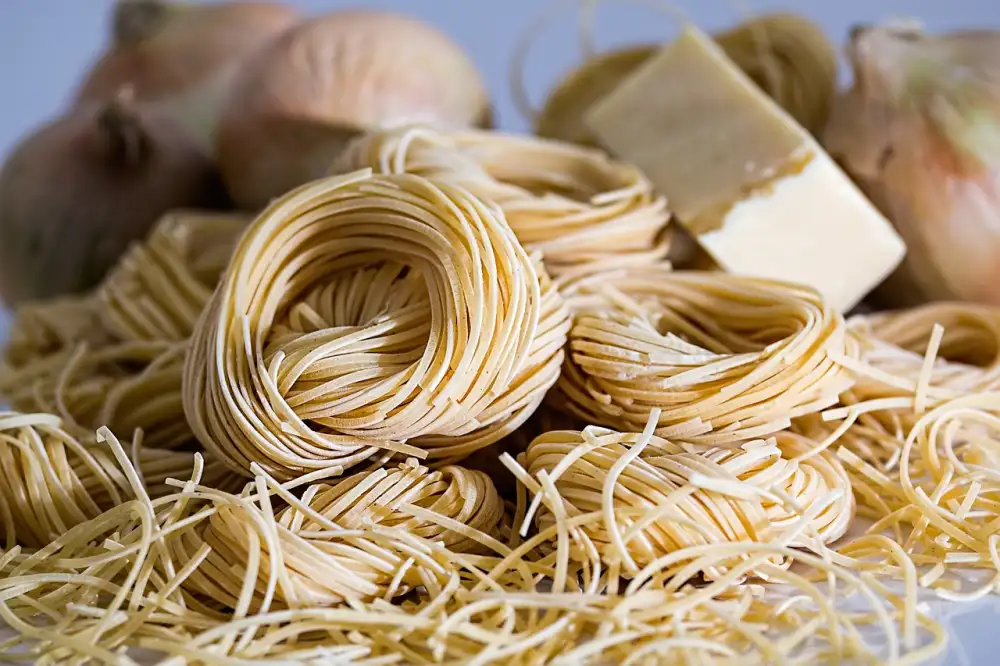Understanding Pica: Exploring the Risks and Effects of Eating Corn Starch for Your Health

- Understanding pica: Definition and causes
- The appeal of corn starch as a preferred substance for pica sufferers
- Potential health risks associated with eating corn starch
- Recognizing the signs and symptoms of pica
- Seeking medical help for pica and its treatment options
- Healthy alternatives to consuming corn starch for pica sufferers
Pica is a disorder characterized by the persistent craving and consumption of non-food substances. One common substance that individuals with pica often consume is corn starch. While corn starch is typically used as a thickening agent in cooking and baking, some people develop an unusual desire to eat it in its raw form. This article aims to explore the risks and effects of eating corn starch for one's health, particularly in the context of pica. By understanding this connection, we can shed light on the importance of recognizing and addressing this disorder for overall well-being.
Understanding pica: Definition and causes
Pica is a disorder characterized by the persistent craving and consumption of non-food substances. These substances can include but are not limited to corn starch, dirt, clay, ice, and even paper. Pica is most commonly observed in children and pregnant women, although it can affect individuals of any age or gender.
The exact cause of pica is still unknown, but several factors have been identified as potential contributors. Nutritional deficiencies, such as iron or zinc deficiency, may play a role in triggering pica cravings. Additionally, certain mental health conditions like obsessive-compulsive disorder (OCD) or developmental disorders like autism spectrum disorder (ASD) are often associated with pica.
It is important to note that pica cravings for specific substances can vary from person to person. In the case of corn starch consumption, the appeal may be related to its texture or taste preferences. Some individuals find comfort in the powdery consistency of corn starch or enjoy its mild flavor.
While pica cravings may seem unusual to those who do not experience them, it is essential to approach this disorder with empathy and understanding. Recognizing the underlying causes of pica can help healthcare professionals develop appropriate treatment plans and support individuals in managing their condition effectively.
The appeal of corn starch as a preferred substance for pica sufferers
For individuals with pica, the appeal of corn starch as a preferred substance is multifaceted. Firstly, corn starch has a unique texture that can be satisfying to chew on or crunch between the teeth. Its powdery consistency provides a sensory experience that some pica sufferers find comforting or pleasurable. Additionally, corn starch is readily available and affordable, making it easily accessible for those seeking to satisfy their cravings. Lastly, its neutral taste allows pica sufferers to consume it without any strong flavors or aftertastes, which may be appealing to those who have specific food aversions or sensitivities. However, despite these perceived benefits, it is crucial to understand the potential health risks associated with consuming corn starch excessively.
Potential health risks associated with eating corn starch
While corn starch may seem harmless, consuming large quantities of it can pose several health risks. One of the main concerns is the potential for nutrient deficiencies. When individuals regularly consume corn starch instead of nutritious foods, they miss out on essential vitamins and minerals needed for optimal health. This can lead to deficiencies in iron, calcium, and other vital nutrients.
Another risk is gastrointestinal problems. Corn starch is not easily digested by the body, and consuming excessive amounts can lead to digestive issues such as bloating, constipation, and stomach discomfort. In some cases, it may even cause intestinal blockages or obstructions.
Furthermore, consuming corn starch can have an impact on blood sugar levels. As a carbohydrate-rich substance, it can cause spikes in blood glucose levels, especially when consumed in large quantities. This can be particularly problematic for individuals with diabetes or those at risk of developing the condition.
Lastly, there is a risk of weight gain associated with excessive consumption of corn starch. Since it is high in calories and lacks significant nutritional value, regularly indulging in this habit can contribute to weight gain and increase the risk of obesity-related health issues.
It is important to note that these risks primarily apply to those who consume large amounts of corn starch on a regular basis. Occasional consumption or small quantities are unlikely to cause significant harm. However, it is still advised to seek medical advice if you suspect you or someone you know may be engaging in pica-like behavior involving corn starch consumption.
Recognizing the signs and symptoms of pica
Recognizing the signs and symptoms of pica is crucial for early intervention and treatment. Individuals with pica may exhibit behaviors such as persistent cravings for non-food substances, including corn starch. They may also engage in repetitive consumption of these substances, despite negative consequences to their health. Other signs include nutritional deficiencies, gastrointestinal issues, and dental problems. If you or someone you know shows these symptoms, seeking medical help is essential to address the underlying causes and prevent further harm.
Seeking medical help for pica and its treatment options
Seeking medical help for pica is crucial in order to address the underlying causes and prevent potential health complications. A healthcare professional, such as a doctor or psychologist, can conduct a thorough evaluation to determine the root cause of the pica behavior. Treatment options may include cognitive-behavioral therapy, counseling, and medication management. It is important to remember that each case of pica is unique, and treatment plans should be tailored to individual needs. Early intervention and ongoing support are essential for managing pica effectively and promoting overall well-being.
Healthy alternatives to consuming corn starch for pica sufferers
For individuals who struggle with pica and have a strong desire to consume non-food substances like corn starch, it is important to find healthier alternatives. One option is to replace corn starch with foods that provide similar textures and sensations. Examples include tapioca pearls, chia seeds, or rice cakes. These alternatives can provide a satisfying crunch or chewiness without the potential health risks associated with consuming corn starch. Additionally, incorporating more nutritious foods into the diet, such as fruits and vegetables, can help satisfy cravings and provide essential vitamins and minerals. It is crucial for pica sufferers to work closely with healthcare professionals to develop a safe and balanced eating plan that meets their nutritional needs while avoiding harmful substances.
In conclusion, it is crucial to promote awareness and understanding of pica and its impact on health. Eating corn starch may seem harmless, but it can have serious consequences for individuals suffering from this disorder. By educating ourselves and others about pica, we can help reduce the stigma surrounding it and encourage those affected to seek medical help. It is important to remember that pica is a complex condition with underlying causes that need to be addressed. Together, let's support research, raise awareness, and provide resources for effective treatment options.
Published: 09. 12. 2023
Category: Health



